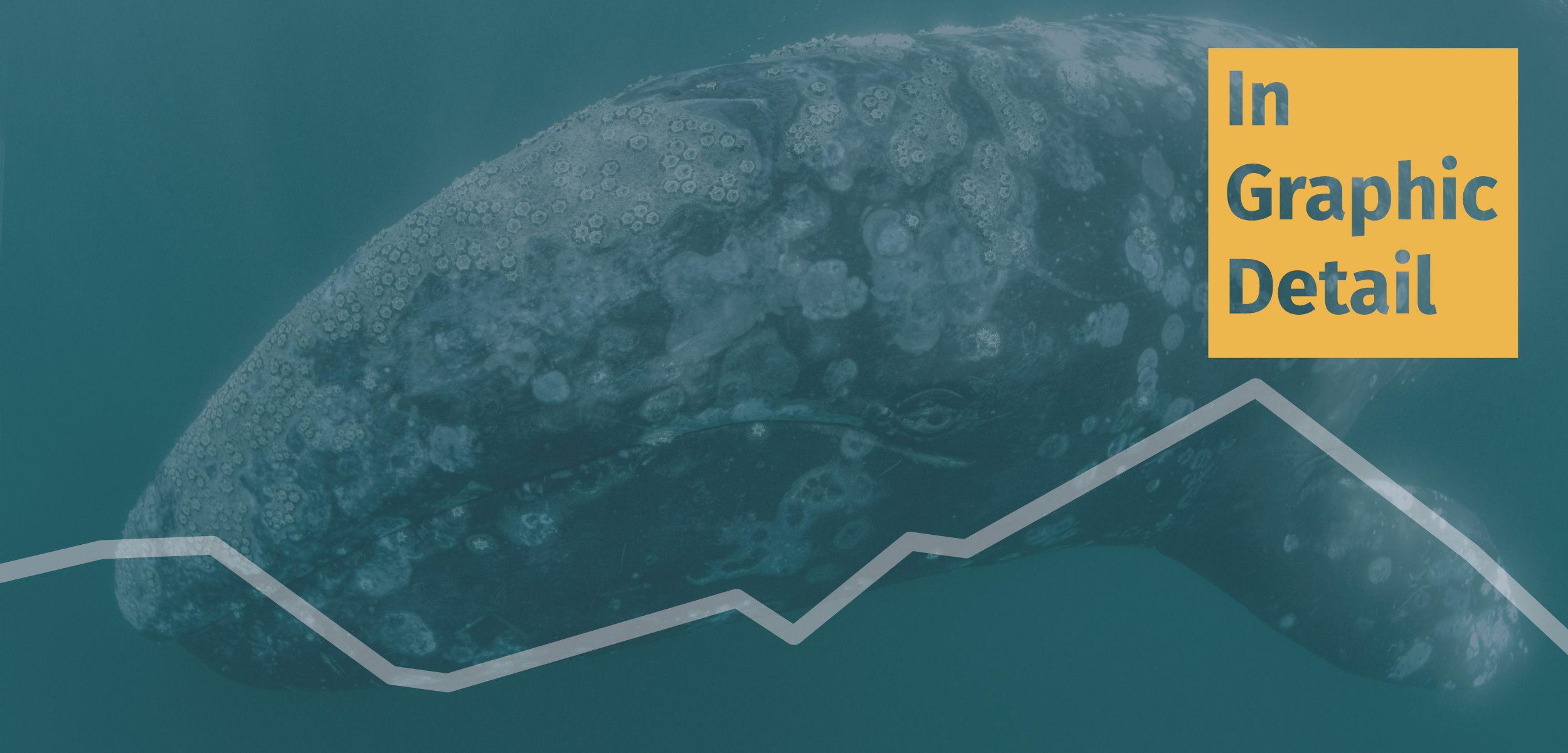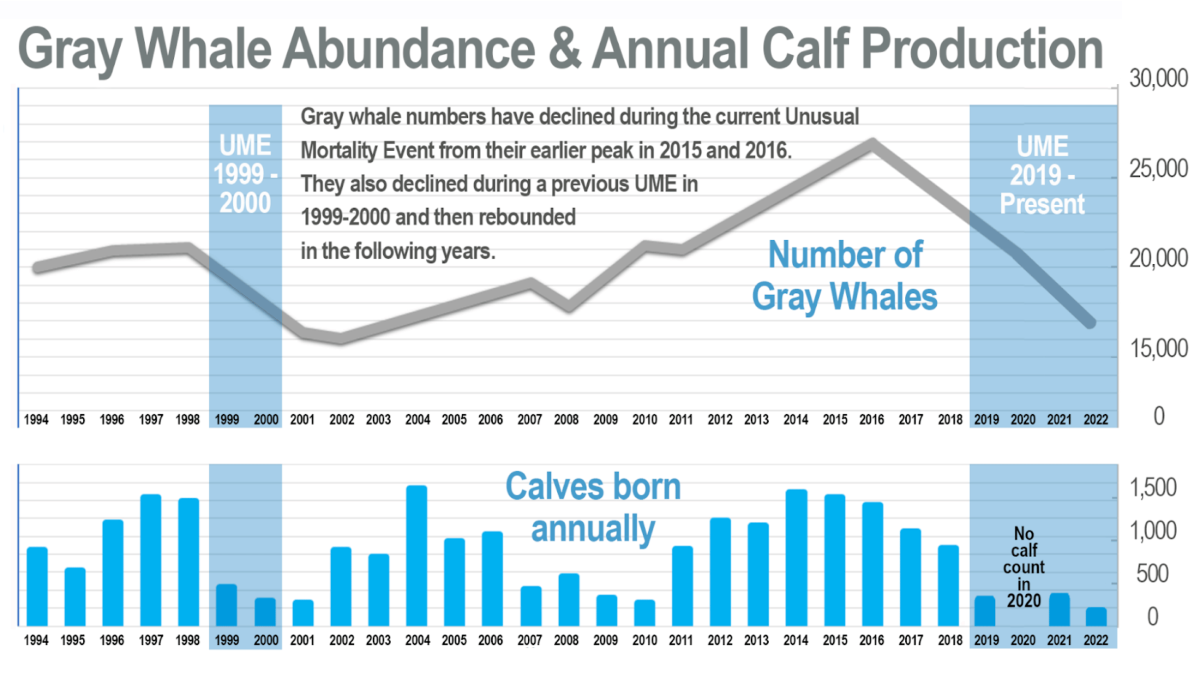In Graphic Detail: Gray Whales in Flux
The number of gray whales in the eastern North Pacific Ocean was a cause for celebration a few years ago. What happened?
Article body copy
In Baja California, Mexico, winter means calving time for eastern North Pacific gray whales. Gray whales migrate to these warm waters in early January and give birth in a handful of lagoons, where scientists can tally their calves. But 2022 marked the lowest number of births since the count began in 1994.
A small number of calves is one part of a trend: a dwindling gray whale population.
In a recent report, the National Oceanic and Atmospheric Administration (NOAA) estimated the eastern North Pacific population at 16,650—a 38 percent drop since its peak in 2015 and 2016. Fecundity is similarly sliding, with 217 calves born in 2022, down from 383 in the previous year. While gray whale populations have fluctuated before, the downward trend has some scientists worried.
Aside from a drop in fertility, in 2019 and 2020, a total of 388 whales were reported stranded across North America. NOAA declared the strandings an unusual mortality event (UME). NOAA continues to investigate the specific causes, but studies suggest many of the stranded whales were malnourished, possibly the result of ecological changes in the Arctic affecting their food supply.
Ship strikes and killer whale attacks also caused some of the deaths. “There is no one thing that we can point to that explains all of the strandings,” says Deborah Fauquier, a veterinary medical officer at NOAA, in an October news bulletin. “There appears to be multiple factors that we are still working to understand.”
The 2019–2020 UME echoes similar population fluctuations in the past. The 1999 UME was declared when gray whale numbers fell by around 40 percent, before slowly increasing again in 2002.
“The population has rebounded multiple times from low counts in the past,” says Tomo Eguchi, a whale researcher with NOAA. “We are cautiously optimistic that the same will happen this time. Continued monitoring will determine whether and when they rebound.”


